
Colt belt Loading Machine, complete in working condition

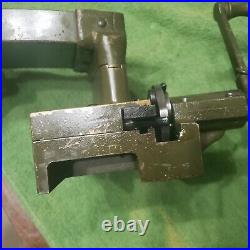
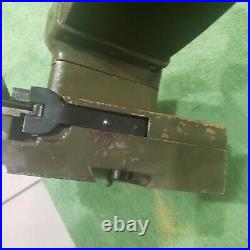
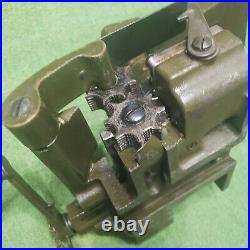
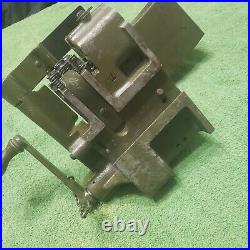
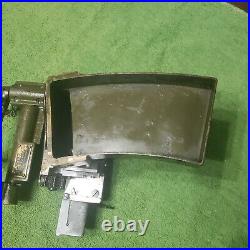
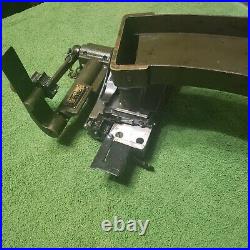
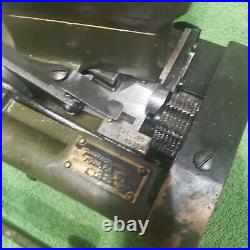

This is very rare to find B5T Belt loading Machine. This is the later 1920 patent dated loader. This has a lot. Of the updates that are also on the 1918 browning belt loading machine. These are very rare and hard to find. This is for 30-06, i hVe been told that these are sometime called the 1928 colt belt loader. It is believed these are comercial belt loaders and not US military. This is not for the colt digger, that would be the older, non updated design. This is the best description I have found on this item. FEEDING THE TIGER: COLT VS. 30 CALIBER BELT LOADING MACHINES- A COMPARATIVE STUDYBy Jean-Francois LegendreIf World War II vintage belt loading machines for. 30 caliber Browning fabric belts are commonly encountered these days, the very early Browning variant, as well as its Colt predecessor, are considerably scarcer. This article is intended to provide a thorough visual and technical comparison between the Colt and the early Browning belt loading machines for the caliber. The first belt loading machine intended to fill the stripless fabric belts for the Colt Potato Digger Model of 1895 machine gun was patented both in the United Kingdom and in the United States by John M. The US patent was granted under the reference number 660,244 on October 23, 1900 (application filed on November 16, 1899), whereas the British patent had been granted earlier on January 4, 1900. Although this early machine had been designed by John Browning, since it had been primarily issued with Colt Model of 1895 and Model of 1914 machine guns, this machine will simply be referred to as Colt loader in the subsequent text. This belt loading machine saw a very wide distribution by accompanying the numerous Colt machine guns exported worldwide as well as those acquired by the US government. With years of experience gained by the use of the Colt loader, it became apparent at the end of the First World War that a few improvements needed to be incorporated to provide the newest, and commercially most promising, Browning Model of 1917 machine guns with a more reliable loader. Accordingly, besides some minor technical modifications, a set of new features to be embodied in the previous Colt loader has been patented by John Browning in the US under the reference number 1,327,698 and granted on January 13, 1920 (application filed on September 9, 1919). This improved new loader, which was used worldwide for decades, will be denoted in the following presentation simply as Browning loader. Retrieved by the renowned author Dolf Goldsmith, an interesting correspondence, dated April 26, 1918, between the Office of Traveling Supervisor/Textile Equipment Inspection, Bridgeport Conn. And the Engineering Bureau, Ord. Washington DC provides some further insights on the topic of belt loading machines and on the motivations of some of the improvements. In this 1918 dated document the two loaders were already denoted as old Colt loading machine and new Browning loading machine. Besides the commercial Colt manual for the Model of 1914 weapon, the other reference used in our study is the US official Handbook Antiaircraft material for machine guns – service handbook dated November 1919. In this document, the Browning, Colt and Colt Vickers belt loading machines are described. It is emphasized that Colt and Browning loaders, although visually similar, are not interchangeable since the cartridge pitch of the fabric belts for the Colt and Browning are different. It is also noted that the fabric belts for the Marlin machine gun correspond to the Colt belt pattern. Although the author has not been able to determine any conclusive difference from belt specimens between the cartridge pitch of Colt (and Marlin) and early Browning belts, the Bureau of Ordnance correspondence, dated 1918, indeed confirms that difference. It is explained that the early Browning belts are constructed with 17 pockets to the foot, whereas the Colt and Marlin belts have 16 pockets to the foot. It is probable that this difference of pitch had also been taken into account for the design of the sprocket feed wheels fitted to the Colt and Browning loaders but here again it proved difficult to the author to really measure such a small difference in pitch. The basic description and principle of operation of these loaders can best be explained from an early Colt manual as follows:… This machine has a cast-iron body to which the other parts are assembled; a cartridge guide into which the cartridges are stripped from their clips by the act of insertion; screw holes in the base for attaching the machine to a table or board; and crank handle for operating. Two cartridges are inserted in the leading end of the belt; the belt end inserted in the feedway, and the crank turned. As the crank revolves, the belt is drawn through the machine by the rotation of upper and lower sprocket wheels which engage the cartridge-filled section of the belt. As the belt loops are moved into filling position they are simultaneously engaged on both sides by steel needles, and thereby held open while the feeding plunger pushes a cartridge into place. In conclusion, it is realized that although similar at first sight, the Colt and the early Browning belt loaders do definitively differ in many features. In any instance, these early loaders remain scarce items today and are worthy of close investigation. A comprehensive description and comparison between the Colt, the Marlin and the Browning stripless fabric belts will be provided in a future article to be published in Small Arms Review. This article first appeared in Small Arms Review V8N5 (February 2005). The item “Colt belt Loading Machine, complete in working condition” is in sale since Wednesday, October 7, 2020. This item is in the category “Collectibles\Militaria\1919-38\Original Period Items”. The seller is “carbinecollector” and is located in Valparaiso, Indiana. This item can be shipped worldwide.
